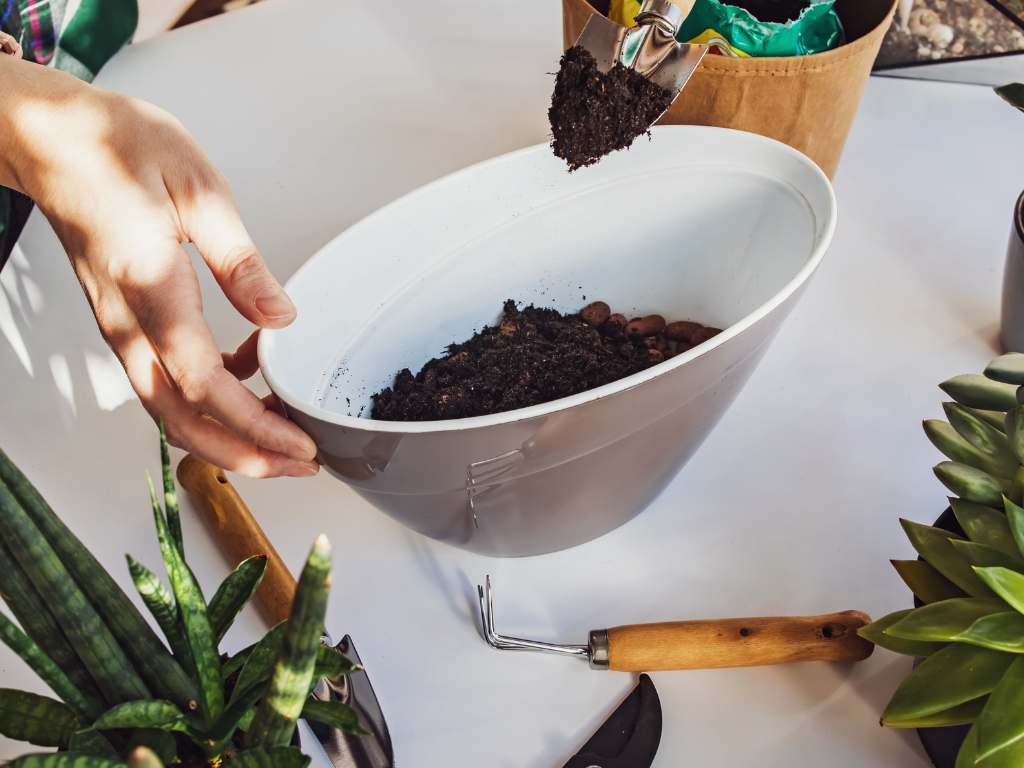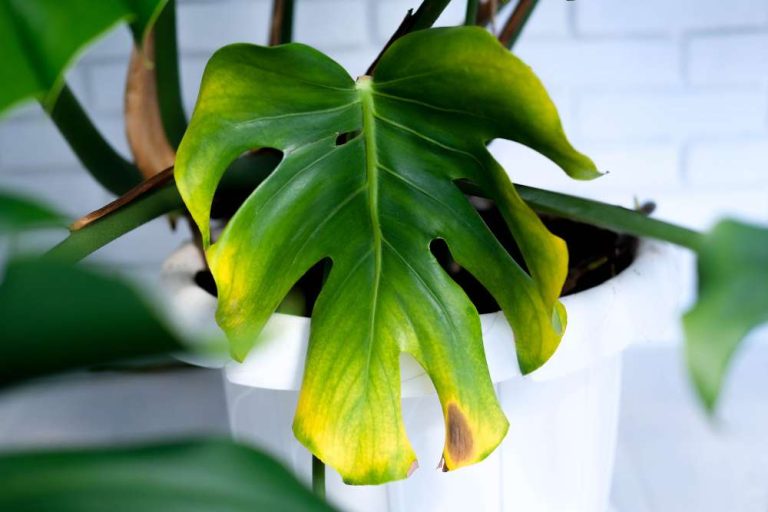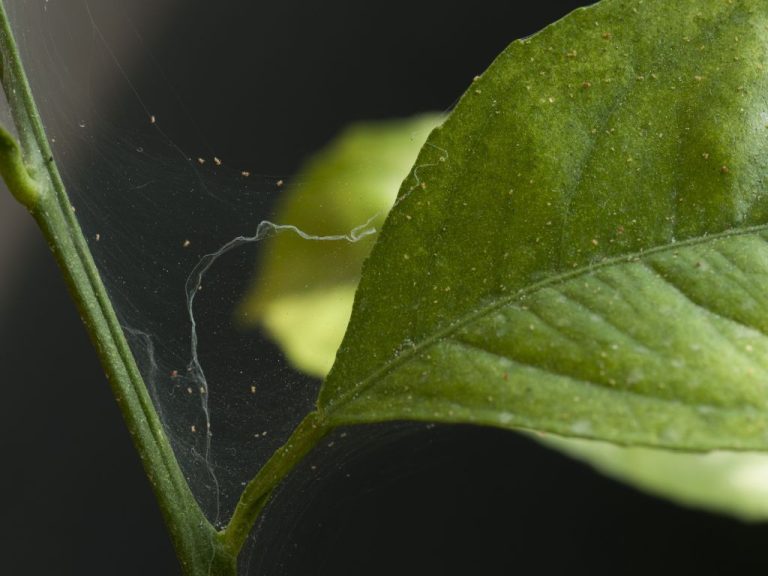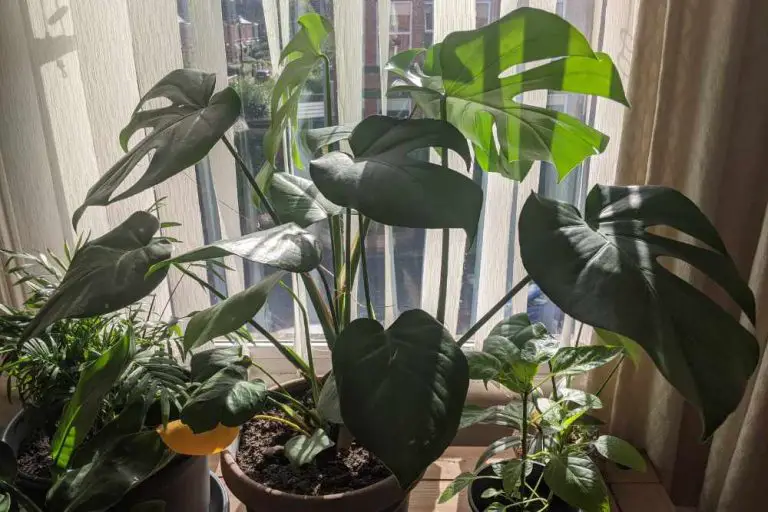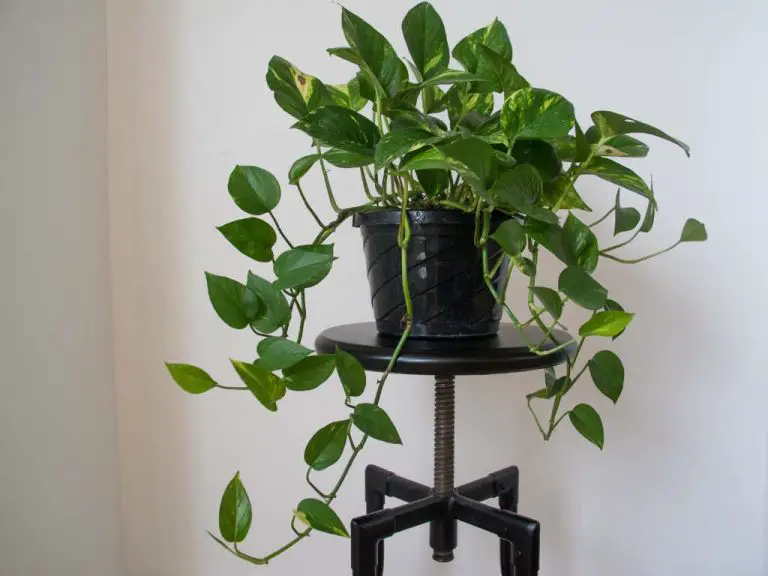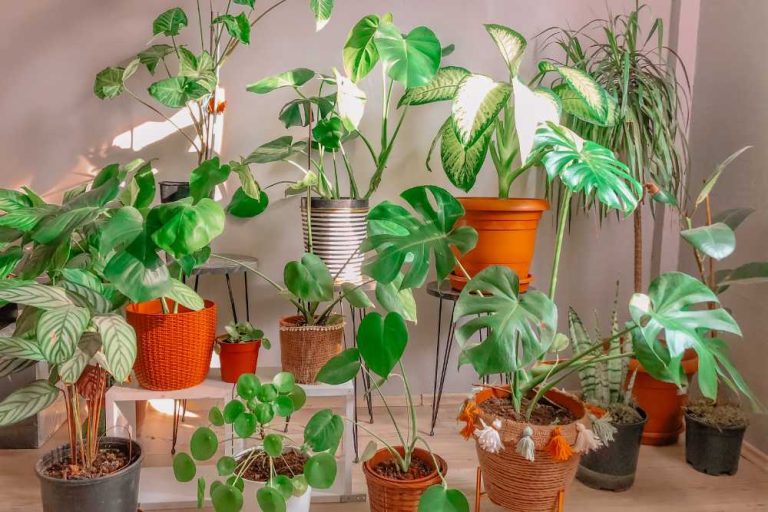What is the Best Dirt for Your Houseplant: Complete Guide
Finding the best dirt or soil for your houseplants is essential for their overall health and growth. The right dirt should provide proper drainage, aeration, and nutrients for your plants. Let’s explore the different types of dirt and potting mixes recommended by experts and horticulturists.
When it comes to choosing the best dirt for your houseplants, it’s important to understand the difference between potting soil and potting mix. While they are often used interchangeably, potting soil usually contains actual dirt, while potting mix is a mix of soilless ingredients. Potting soil is more suitable for garden beds, while potting mix is designed specifically for potted plants. Different soil types within these categories cater to various houseplants’ needs.
Read – How to Break Down Clay Soil Fast
Horticulturists and plant specialists recommend specific potting mixes for different types of indoor plants. The Miracle-Gro Premium Potting Mix is commonly praised for its versatility and affordability.
It works well for various types of plants, including traditional houseplants, seedlings, and succulents. The Miracle-Gro Indoor Potting Mix is another popular choice, known for its water retention and pH-balancing properties.
Other recommended potting mixes include Miracle-Gro Nature’s Care Organic Potting Mix with Water Conserve, Espoma AP4 Organic Potting Mix, Fertilome Ultimate Potting Mix, and Fiddle Leaf Fig Plant Resource Premium Fiddle Leaf Fig Tree Potting Soil.
Key Takeaways:
- Finding the right dirt or soil for your houseplants is crucial for their overall health and growth.
- Potting soil contains actual dirt, while potting mix is a mix of soilless ingredients.
- Popular potting mixes recommended by experts include Miracle-Gro Premium Potting Mix and Miracle-Gro Indoor Potting Mix.
- Adequate drainage and proper watering are essential for the well-being of your houseplants.
- Enhance your indoor plant decor by adding decorative soil covers such as glass beads, lava rocks, and mosses.
Difference Between Potting Soil and Potting Mix
When it comes to choosing the best dirt for your houseplants, it’s important to understand the difference between potting soil and potting mix. While they are often used interchangeably, potting soil usually contains actual dirt, while potting mix is a mix of soilless ingredients.
Potting soil is more suitable for garden beds, where the plants have access to the ground. It contains a combination of natural soil, such as garden loam or topsoil, along with other organic matter like compost. It can be heavy and may not provide the necessary drainage for potted plants.
Potting mix, on the other hand, is specifically designed for potted plants. It is a blend of various soilless ingredients like peat moss, perlite, vermiculite, and coco coir. This blend ensures proper aeration, drainage, and moisture retention, which are essential for the health and growth of your houseplants.
Advantages of Using Potting Mix
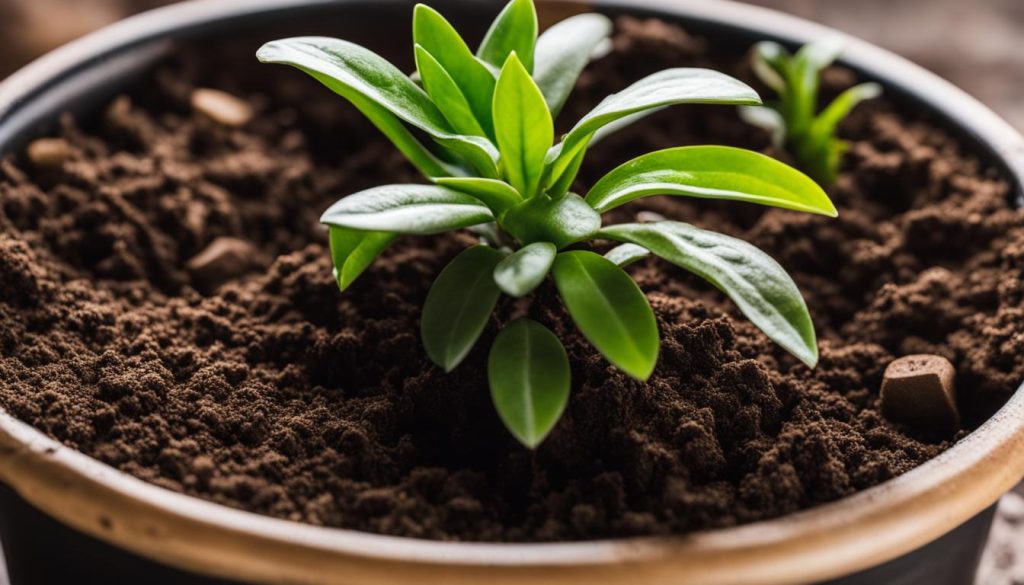
Potting mix offers several advantages over potting soil. Firstly, it is lightweight, which makes it easier to handle and transport. It also provides better drainage, reducing the risk of overwatering and root rot.
Additionally, potting mix is typically sterile, which helps prevent the growth of harmful pathogens that can damage your plants. The soilless ingredients in the potting mix also provide a consistent and balanced supply of nutrients to your houseplants.
Overall, understanding the difference between potting soil and potting mix is crucial in choosing the right type of dirt for your houseplants. By opting for a potting mix, you can ensure that your potted plants receive the best possible growing environment, promoting their health and vitality.
Recommended Potting Mixes for Indoor Plants
When it comes to choosing the best potting mix for your indoor plants, it’s important to consider the specific needs of each type of plant. Proper soil composition is crucial for the overall health and growth of your plants. The right potting mix will provide essential nutrients, proper drainage, and moisture retention to ensure optimal conditions for your indoor plants to thrive.
One highly recommended potting mix is the Miracle-Gro Premium Potting Mix. This versatile and affordable option is suitable for a wide range of indoor plants, including traditional houseplants, seedlings, and succulents. With excellent drainage and a balanced blend of organic matter and nutrients, the Miracle-Gro Premium Potting Mix provides an ideal environment for healthy root development and lush foliage.
Selecting Organic Soil for Houseplants
If you prefer to use organic soil for your houseplants, the Miracle-Gro Nature’s Care Organic Potting Mix with Water Conserve is an excellent choice. This organic potting mix is made from natural ingredients, including coconut coir, composted bark, and peat moss. It helps retain moisture while promoting optimal drainage, allowing your plants to absorb the necessary water and nutrients for their growth.
For those looking for an alternative to synthetic fertilizers, the Espoma AP4 Organic Potting Mix is a great option. This blend contains a rich mix of organic materials like peat moss, perlite, and earthworm castings, providing essential nutrients in a natural and sustainable way.
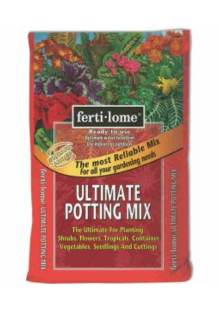
The Espoma AP4 Organic Potting Mix supports strong root development and overall plant health without the use of synthetic chemicals. Other recommended potting mixes include the Fertilome Ultimate Potting Mix, known for its superior moisture retention and optimal nutrient balance, and the Fiddle Leaf Fig Plant Resource Premium Fiddle Leaf Fig Tree Potting Soil, specially formulated for the specific needs of fiddle leaf fig trees.
These potting mixes have received positive reviews from plant enthusiasts and horticulturists alike for their effectiveness in supporting healthy and thriving indoor plants.
Choosing the Right Soil Blend for Your Houseplants
When it comes to providing your houseplants with the best environment for growth, selecting the right soil blend is crucial. Different plants have unique needs, and choosing the appropriate soil blend ensures that those needs are met. Whether you have cacti and succulents, potted plants, orchids, or bonsai trees, here are some soil blend recommendations to help your houseplants thrive.

Cacti and Succulents
Cacti and succulents require a well-draining soil blend to prevent waterlogged roots. A blend consisting of peat moss, perlite, and sand is ideal for these desert plants. The peat moss helps retain moisture without becoming overly compacted, while the perlite and sand improve drainage and aeration. This blend mimics the natural arid habitat of cacti and succulents, allowing the roots to stay healthy and thrive.
Potted Plants
Potted plants benefit from a soil blend that is specifically formulated for their container environment. These blends usually consist of a mixture of soilless ingredients such as coconut fiber, vermiculite, peat moss, sand, wood fiber, and perlite.
This combination promotes proper aeration, moisture retention, and drainage. The soilless nature of the blend also reduces the risk of pests, diseases, and weed growth commonly associated with outdoor garden soil.
Orchids
Orchids require a specialized soil blend that mimics their epiphytic habitat. A suitable mix for orchids includes components like fir bark, sphagnum moss, charcoal, coco fibers, perlite, or a combination of these materials.
This blend provides excellent drainage, aeration, and moisture retention, allowing orchid roots to breathe and preventing root rot. It also creates a supportive structure for the delicate roots to anchor onto.
Bonsai Trees and Shrubs
Bonsai trees and shrubs have their own unique soil requirements to maintain their intricate root systems. Specially designed bonsai soils consist of ingredients like pumice, lava, calcined clay, and pine bark fines.
These materials ensure proper drainage and aeration while providing essential nutrients. The blend also promotes root ramification, which is crucial for the development and overall health of bonsai trees and shrubs.
Importance of Soil Content and Drainage for Indoor Plants
When it comes to nurturing healthy indoor plants, understanding the importance of soil content and drainage is crucial. Good soil provides nutrients, aeration, and space for root growth, while effective drainage prevents waterlogging and potential root rot. By optimizing these factors, you can ensure the well-being and longevity of your beloved houseplants.
A key consideration when choosing soil for your indoor plants is its composition. Soil mixes that contain substances like coconut fiber, wood fiber, perlite, and sand promote proper aeration and prevent excessive water retention. These ingredients create a well-draining environment that encourages healthy root development. A balanced mix of organic matter and inorganic materials also ensures optimal nutrient availability for your plants.
Proper drainage is equally essential as it helps regulate the moisture levels in the soil. Adequate drainage prevents water from accumulating around the roots, reducing the risk of root rot caused by overwatering.
It’s important to strike a balance when watering your plants, ensuring they receive enough moisture without drowning them. Pay attention to the specific watering needs of each plant, taking into account factors such as the size of the pot, light exposure, temperature, and humidity in your home.
Creating the Ideal Soil Mixture:
To create an optimal soil mixture for your houseplants, consider blending potting soil with additional materials to enhance drainage and aeration. Adding perlite, vermiculite, or sand to your potting mix can promote better water flow and prevent compacted soil. You can also incorporate organic matter like compost or peat moss to improve the overall soil structure and increase nutrient retention.
By selecting the right soil content and ensuring effective drainage, you’ll provide your indoor plants with a healthy growing environment.
Remember to monitor your plants’ watering needs and adjust accordingly, keeping them consistently moist but not waterlogged. With proper soil care, your indoor plants will flourish and add beauty to your living spaces.
Plant Watering Tips and Best Soil Practices
Proper watering is essential for the health and well-being of your houseplants. Understanding the watering needs of your plants based on their size, light exposure, temperature, and humidity is crucial. Most houseplants prefer damp soil with about 1-2 inches of moisture. However, succulents have different requirements and thrive when given a good soak followed by complete drying out.
To ensure healthy root growth and prevent overwatering, bottom watering is recommended for succulents. This method allows the plant to absorb water through the roots, promoting stronger growth. Overwatering can lead to root rot, so it’s important to strike a balance and avoid excessive moisture in the soil.
In addition to proper watering, regular fertilization using a specialized indoor plant fertilizer is essential. This ensures that your plants receive the necessary nutrients to thrive. Select a fertilizer specifically designed for indoor plants, following the instructions on the packaging for application frequency and dosage.
When it comes to soil practices, it’s important to choose the right potting soil for your houseplants. Different plants have different soil requirements, so select a soil blend that caters to their specific needs. For instance, cacti and succulents require a well-draining soil blend with a mixture of peat moss, perlite, and sand. On the other hand, orchids thrive in a potting mix containing fir bark, sphagnum moss, charcoal, and other organic ingredients.
Read – DIY Automatic Watering System for Indoor Plants
Enhancing Your Indoor Plant Decor with Soil Covers
When it comes to indoor plant decor, soil covers are a fantastic way to add a touch of style and elegance to your plant containers. Not only do they enhance the visual appeal of your indoor plants, but they also have practical benefits. Soil covers can improve drainage, prevent waterlogging, and even help increase humidity around your plants.
There are various options available for decorative soil covers. Glass beads, lava rocks, polished stones, and mosses are popular choices that can add color and texture to your plant containers. These decorative covers not only provide a neat and tidy look but also create a beautiful contrast against the green foliage of your indoor plants.
When choosing soil covers, consider the specific needs of your plants. Lava rock soil covers are ideal for succulents and bonsai trees, as they provide excellent drainage and mimic their natural environment. Marble chips and glass beads, on the other hand, are perfect for terrariums and dish gardens, creating a stunning display.
Adding soil covers to your indoor plants is a simple yet effective way to elevate your plant decor. Whether you prefer a minimalist look or a more vibrant display, decorative soil covers can transform your indoor plants into stylish and visually appealing focal points in your home.
FAQ
What is the best dirt for my houseplants?
The best dirt for your houseplants depends on their specific needs. Different types of plants require different soil blends. It is recommended to use potting soil for garden beds and potting mix for potted plants. Consider using specific potting mixes recommended for different types of indoor plants.
What is the difference between potting soil and potting mix?
Potting soil usually contains actual dirt, while potting mix is a mix of soilless ingredients. Potting soil is more suitable for garden beds, while potting mix is designed specifically for potted plants.
What are some recommended potting mixes for indoor plants?
Some recommended potting mixes for indoor plants include Miracle-Gro Premium Potting Mix, Miracle-Gro Indoor Potting Mix, Miracle-Gro Nature’s Care Organic Potting Mix with Water Conserve, Espoma AP4 Organic Potting Mix, Fertilome Ultimate Potting Mix, and Fiddle Leaf Fig Plant Resource Premium Fiddle Leaf Fig Tree Potting Soil.
How do I choose the right soil blend for my houseplants?
When choosing a soil blend for your houseplants, consider their specific needs. Cacti and succulents require a well-draining soil blend, while orchids prefer a mix containing fir bark, sphagnum moss, charcoal, coco fibers, perlite, or a combination of these materials. Bonsai trees and shrubs thrive in specially designed bonsai soils that contain pumice, lava, calcined clay, and pine bark fines.
What is the importance of soil content and drainage for indoor plants?
Good soil should provide ample space for root growth, proper aeration, and effective drainage. Soil mixes with substances like coconut fiber, wood fiber, perlite, and sand help prevent waterlogging and promote healthy root systems. Adequate drainage is crucial to avoid root rot caused by excessive moisture.
How should I water my houseplants and what are the best soil practices?
Most houseplants prefer damp soil with 1-2 inches of moisture. Succulents require a good soaking followed by complete drying out. Bottom watering is recommended for succulents to promote stronger root growth and prevent overwatering. Regular fertilization using a specialized indoor plant fertilizer ensures your plants receive the necessary nutrients to thrive.
How can I enhance my indoor plant decor with soil covers?
Adding soil covers to your indoor plants not only enhances their visual appeal but also improves drainage and increases humidity. You can use glass beads, lava rocks, polished stones, and mosses as soil covers to add color and texture to your plant containers. These decorative soil covers give a neat and tidy look to your plant decor.
- 15 Ingenious Kitchen Garden Ideas to Cultivate Freshness Right at Home - April 7, 2024
- 10 Top Picks Best Plants for Open Terrarium - April 2, 2024
- 21 Easy and Cheap Walkway Ideas for a Charming Garden - March 31, 2024

